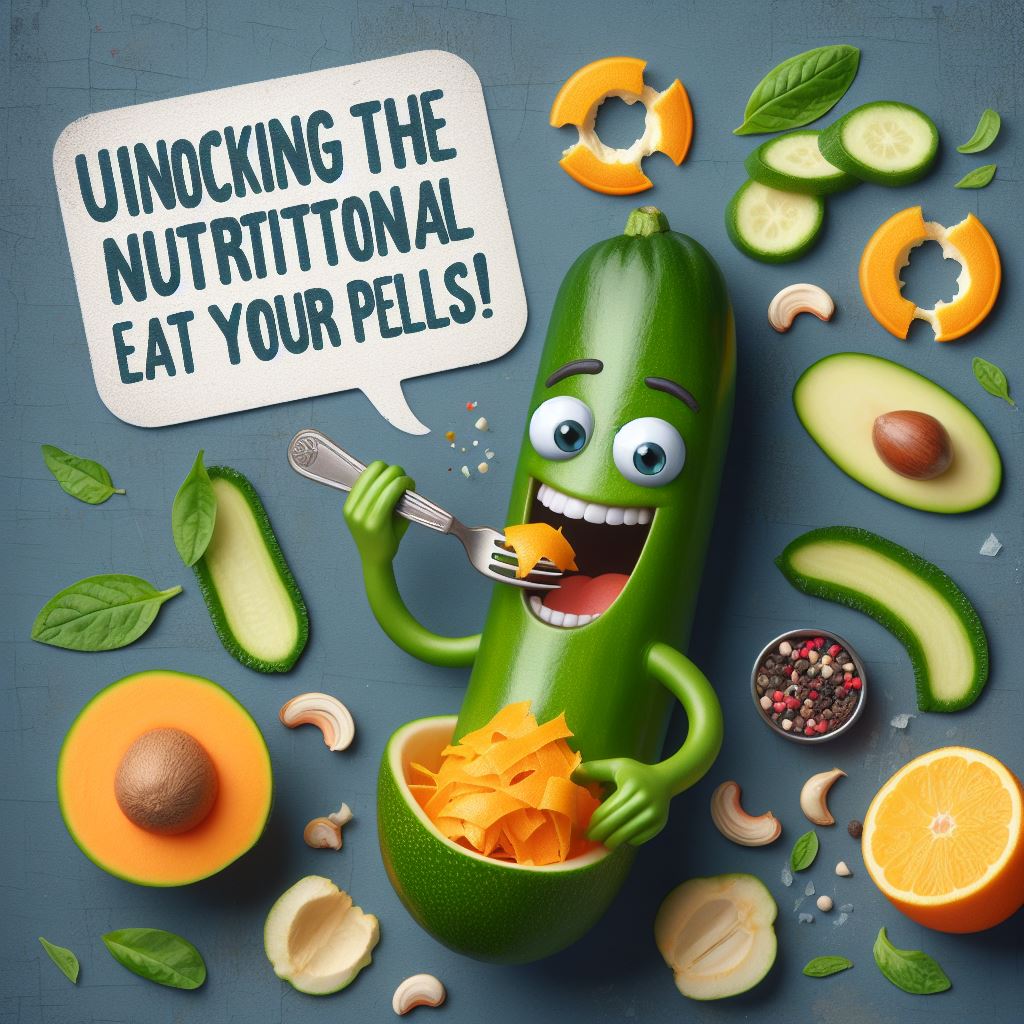When delving into the world of fruits and vegetables, our attention typically zooms in on the internal delights—the succulent flesh, the honeyed pulp, or the crisp heart of these natural treats. But, lurking in the shadows, often overlooked and underestimated, are the unsung heroes of the fruit and vegetable realm—the peels. These outer layers, frequently tossed aside without a moment’s hesitation, are deserving of a second look. It’s high time we shift our viewpoint and come to the realization that these peels are far more than mere protective barriers. They are, in fact, nutritional goldmines brimming with vitamins, minerals, and fiber, quietly awaiting their moment in the spotlight to be recognized and utilized to their full potential. By reevaluating our approach to these humble coverings, we can unlock a treasure trove of health benefits previously consigned to the compost bin.
1. Banana Peels: The Potassium Boosters
Banana peels might seem unappetizing, but they’re brimming with goodness. Here’s why you should consider eating them:
- Potassium: Banana peels contain more potassium than the fruit itself. This essential mineral helps regulate blood pressure, supports muscle function, and maintains fluid balance in the body.
- Antioxidants: Quercetin, an antioxidant found in banana peels, fights inflammation and protects against oxidative stress. It’s like a superhero cape for your cells.
So, how can you incorporate banana peels into your diet? Try blending them into smoothies or baking them into muffins. Get creative and unlock their potential!
2. Orange Peels: Bitter but Beneficial
Orange peels may taste bitter, but they’re worth the acquired taste. Here’s what they bring to the table:
- Vitamin C: These peels are bursting with vitamin C, which boosts your immune system and keeps colds at bay. Don’t shy away—grate them into salads or infuse them into tea for a zesty twist.
3. Apples: Don’t Peel Away the Goodness
An apple a day keeps the doctor away, but what about its peel? Let’s dive in:
- Digestive Health: Apple peels are rich in dietary fiber, especially pectin. This fiber supports gut health, aids digestion, and keeps things moving smoothly.
- Immune Boost: Vitamin C strikes again! Apples provide a double dose of immune support—both in the flesh and the peel.
- Phytochemicals: Flavonoids and phenols in apple peels act as antioxidants, safeguarding your cells from free radicals.
Next time you bite into an apple, leave the skin on. Your gut will thank you.
4. Potato Peels: More Than Meets the Eye
Potato peels often end up in the compost bin, but they deserve a second chance:
- Nutrient-Rich: The peel contains more nutrients than the potato itself. Think fiber, vitamins B6 and C, potassium, and iron.
- Brain Boost: Vitamin B6 supports brain function and mood regulation. Who knew that the humble peel had such brainy benefits?
Roast those spuds with the skin intact, and you’ll be maximizing their nutritional value.
General Benefits and Beyond
- Cholesterol Control: Dietary fiber in peels binds bile salts, aiding in their reduced absorption. It’s like a natural statin for your gut.
- Pesticide Reduction: Washing fruits and veggies thoroughly can be as effective as peeling them. So, keep those peels on and minimize pesticide exposure.
Conclusion
Before you consider throwing away those peels the next time, pause and reconsider their value. Far from being mere waste, these peels are packed with wellness benefits. Embrace the unique crunch they offer, learn to appreciate the subtle bitterness, and let your body benefit from the rich, hidden nutrients they contain. These overlooked parts of fruits and vegetables are treasure troves of vitamins and minerals, making them a healthy addition to your diet. So, think twice and discover the potential in what you might have previously discarded.
FAQs
Q: Can I eat avocado peels?
- A: Avocado peels are tough and bitter, but some adventurous souls blend them into smoothies for added fiber. However, it’s not common practice.
Q: What about grapefruit peels?
- A: Grapefruit peels are intensely bitter and not typically consumed. Stick to the juicy segments instead.
Q: Are organic peels better?
- A: Organic peels may have fewer pesticide residues, but thorough washing is essential regardless of organic status.
Q: Can I use lemon peels in cooking?
- A: Absolutely! Lemon zest adds flavor to dishes, and the peels can be candied or used in marinades.
Q: How do I create an image for this article?
- A: Get creative! Imagine a vibrant collage of colorful peels or a whimsical illustration of a banana peel superhero. Let your artistic juices flow!


